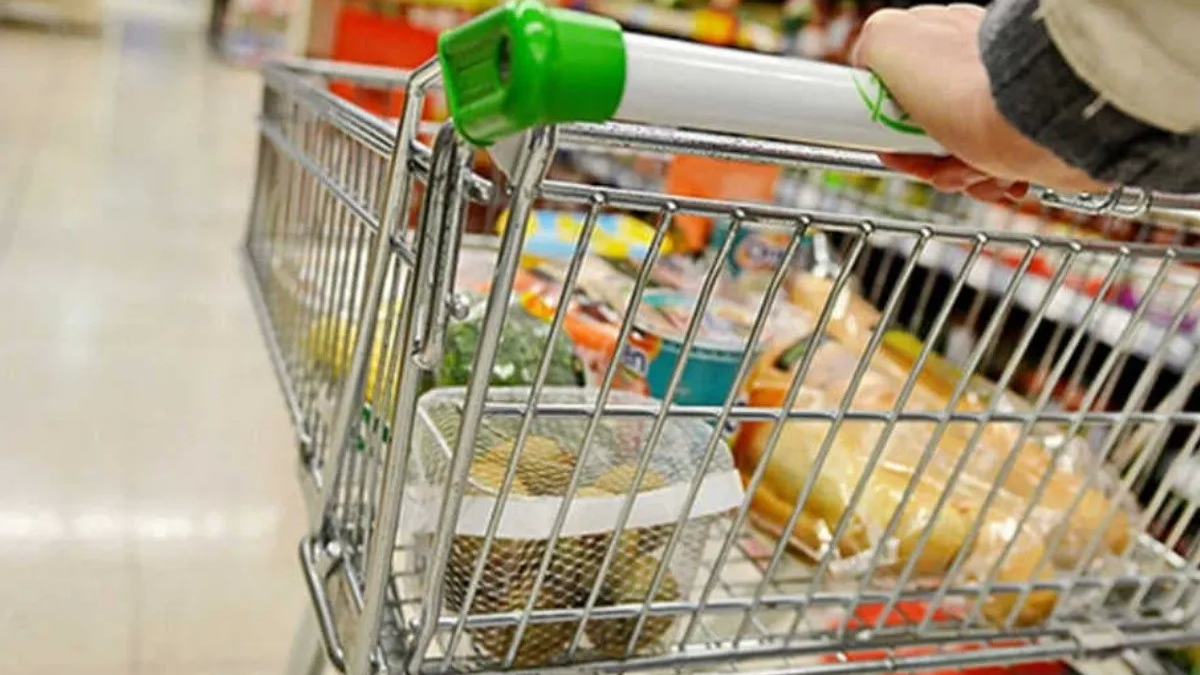The retail inflation in Uruguaymeasured through the CPI, returned to its downward trajectory in the last data for the month of May, settling at 7.1% annual. It is the minimum since May 2021. However, 23% of the composition of the CPI corresponds to food and these have risen clearly above the general index: the annual data to May marks a rise of 13.3% (graph).
In the last 2 years, food rose 25%, while the general index advanced 16.4%. The food inflation It is especially sensitive for two reasons. On the one hand, they are the prices that consumers most frequently face in the store, fair or supermarket. Other components (rent, fees, services) are mostly paid monthly, but meat, noodles, and fruits and vegetables are purchased every week or every day. When consumers talk about “prices”, they refer mainly to prices, which is why they have a high incidence on the inflation perceptionsurely above its real weighting in the CPI.
In addition, and associated with the above, obviously for lower-income families the weighting of food in their consumption basket is greater: food comes first and, therefore, it is reasonable to think that the “effective inflation” for many lower-middle and low-income families (especially large ones) it is higher than the general CPI.
CPI general and food.jpg
Why has food gone up so much?
To explain it, it is necessary to differentiate by category, since the peceto is not the same as the potato. The beef It is the main export product and -at the same time- the central component of the Uruguayan diet. For this reason, there is a “tension” in its price: it arbitrates with external markets that had record prices in 2022, and that is transferred to the local market. Globally, beef is not a cheap food, but in Uruguay it is the most popular (it accounts for almost 5% of the CPI).
In the case of fruits and vegetables the drought reduced local supply and prices jumped to all-time highs. But, in addition, a good part of the fruits and vegetables are not freely imported (must have permission from MGAP), which implies that the drop in local supply is transferred to prices “ipso facto”; if the entry of imports were more fluid, the rise would be more moderate. The case of the poultry meat is similar: import is restricted.
On the other hand, the more elaborated a food is, the less the price of the raw material traded internationally (exported or imported) affects, and the more the local cost. In the baked goodsFor example, the cost of flour is less than 20% of the final price. The rest are rates, services, salaries, etc. Even for fruits and vegetables the producer price is a minor part of the consumer price. Many see this as a symptom of broker abuse. In certain cases, it is possible.
But it must be borne in mind that there is a lot of work to bring the production from the farm to the kitchen: wholesale freight, collection and storage (in certain products in cold rooms), retail freight, quality controls, sales margins from vendors, grocers, supermarkets (they do not work for free) etc. There is even a significant percentage of losses in fresh products, which is inevitable. All these are internal costs that have little to do with the international price or the producer. AND internal costs are more associated with salary and service costs local.
This commercial and cost structure largely explains the dynamics of indexing and why inflation rises more easily than it falls. Put simply, in a sequence of steps:
- – food rises due to drought or international prices
- – part of the increase is transferred to the CPI
- – In order not to lose purchasing power, wages seek to match the CPI
- – due to the above, local costs rise
- – part of this increase is transferred to the final price of food
- – return to the starting point
It is by this sequence that the temporary price increases (as in the analyzed case of certain foods) become -partly- permanent. inflation is a monetary phenomenon but its measurement through indices (there is no other way) generates this type of dynamic that must be considered. For this reason, it is very relevant Salary policy and -especially- the way in which wages are adjusted.
Consequently, to more consistently lower inflation and particularly expectations (those of businessmen remain at 8%) What is needed is not only a contractionary monetary policy, but also greater trade opening, exporting and importing (especially in farm items) and a salary policy aligned with future inflation objectives, rather than past inflation.
Source: Ambito




